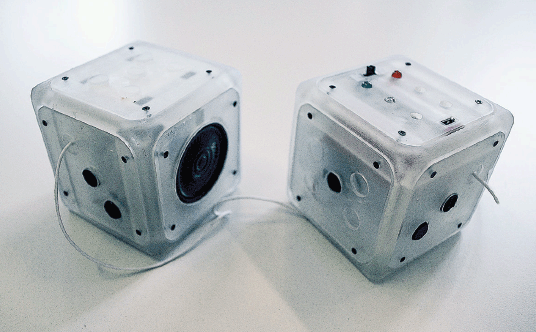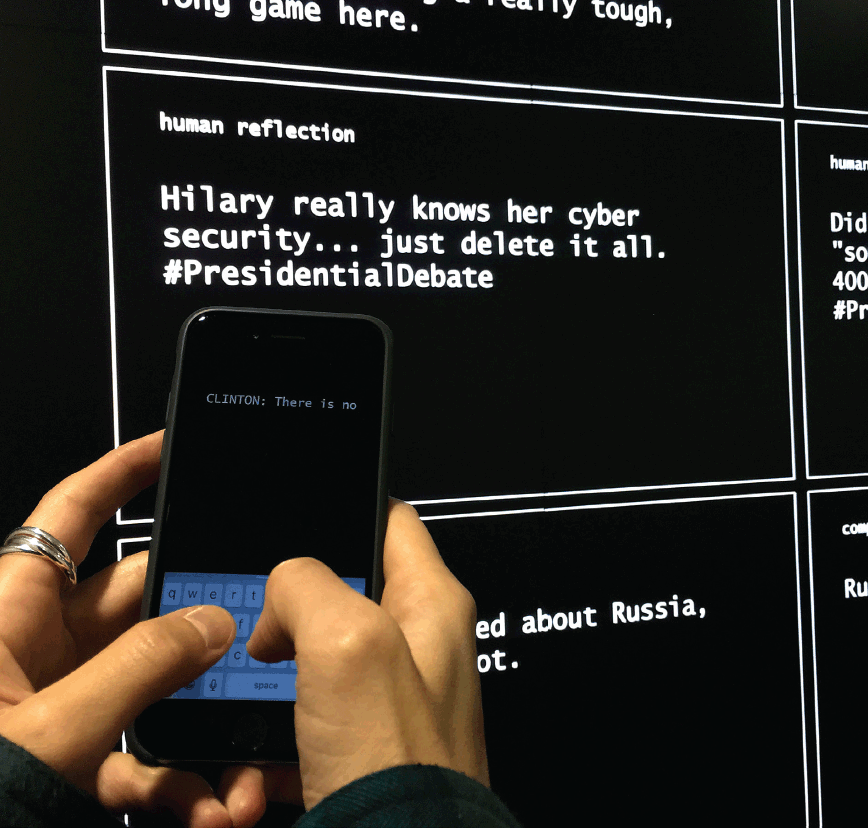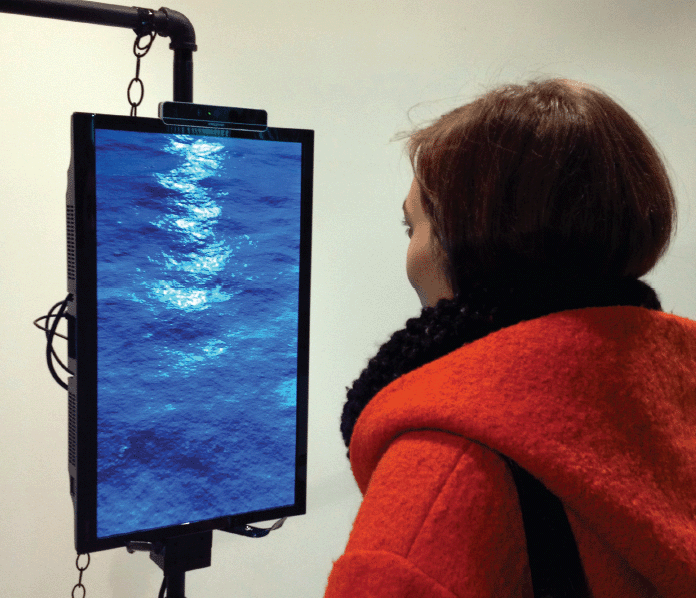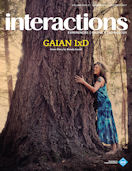Authors:
Ben Bengler, Fiore Martin, Nick Bryan-Kinns, Christopher Frauenberger, Julia Makhaeva, Katta Spiel, Rojin Vishkaie, Lee Jones
Collidoscope is an interactive, collaborative musical instrument that allows for seamlessly recording, manipulating, exploring, and performing real-world sounds. Via built-in microphones, players can record sounds (e.g., their voice) into Collidoscope and then explore these using large sliders alongside the displayed waveforms. In this way, players can move through the sounds, play them back at different speeds, freeze them at a particular position, loop part of them, or layer snippets on top of each other. This results in novel sound textures and timbres, which can then be played via the keyboard, allowing for both musical and explorative interaction.
Bengler, B., Martin, F., Bryan-Kinns, N., and Sheridan, J. Collidoscope: Let's ride the waves of sound. Art.CHI II workshop: Digital Art in a Post-Digital World (CHI'16); http://eecs.qmul.ac.uk/-nickbk/papers/Bengler_Collidoscope_CHI_Arts_2016.pdf
CHI2016 Art.CHI 2016 Digital Catalog (CHI'16) http://art-chi.org/collidoscope
(Open source version): https://code.soundsoftware.ac.uk/projects/opencollidoscope
https://www.youtube.com/watch?v=9XMfKYVu_fg
Ben Bengler, University College London, Intel ICRI Cities/UCLIC
Fiore Martin, Queen Mary University of London, Centre for Digital Music (C4DM)
Nick Bryan-Kinns, Queen Mary University of London, Centre for Digital Music (C4DM)
 | Two players "jamming" with Collidoscope. |
We co-design technologies with autistic children that are fun and meaningful in their lives. We let children guide us in this process instead of letting their perceived deficits determine the requirements. Working with children 6 to 8 years old, we conduct a series of individual workshops over the course of one school year to let them design their own smart object. In the past year, we developed several objects, including sound cubes, a personal alarm system, and an illuminated drawing table. Each of these objects tells a unique story about the life-worlds of children and the collaboration they engaged in.
Frauenberger, C., Makhaeva, J., and Spiel, K. Blending methods: Developing participatory design sessions for autistic children. Proc. of the 16th International Conference on Interaction Design and Children. ACM, 2017.
Spiel, K., Malinverni, L., Good, J., and Frauenberger, C. Participatory evaluation with autistic children. Proc. of the 2017 CHI Conference on Human Factors in Computing Systems. ACM, 2017.
Christopher Frauenberger, Julia Makhaeva, and Katta Spiel, Vienna University of Technology (TU Wien)
 | Öxe, a light table with different learning modes (here in math mode). |
 | Sound Cubes, messaging devices for a very small audience. |
Participatory Diary is a digital logbook that exhibits the participatory communications and interactions of both humans and computers. This installation contains a digital wall display that presents a human's thoughts and a computer's response to them on a given topic. The human's thoughts are input via their personal digital device; the computer's response is generated via machine learning. Exhibition participants can then compare the human and computer responses that are displayed in dialog boxes on the digital wall display. As multiple humans begin to participate in more complex communications and interactions with the computer using Participatory Diary, it will help us to further reflect on human-computer integration in our daily lives.
Rojin Vishkaie, University of Calgary
 | A participant interacting with the installation. |
Your Body of Water is a project that represents biofeedback data in an aesthetic way for self reflection. The Intel RealSense camera picks up the user's heart rate when they are in front of the device. The display then visualizes their heart rate as a body of water. As their heart rate goes up, the water gets stormy, with larger and faster waves. As their heart rate goes down, the water goes calm. This work aims to help users reflect on how they are feeling and get more in touch with their bodily response.
http://leejones.ca/post/151163926266/your-body-of-water
As their heart rate goes up, the water gets stormy, with larger and faster waves.
Lee Jones, Carleton University
 | A user's heart rate is read by the camera and visualized as water. |
©2018 ACM 1072-5520/18/01 $15.00
Permission to make digital or hard copies of all or part of this work for personal or classroom use is granted without fee provided that copies are not made or distributed for profit or commercial advantage and that copies bear this notice and the full citation on the first page. To copy otherwise, to republish, to post on servers or to redistribute to lists, requires prior specific permission and/or a fee.
The Digital Library is published by the Association for Computing Machinery. Copyright © 2018 ACM, Inc.
Most up-to-date version: 01/25/21








Post Comment
No Comments Found